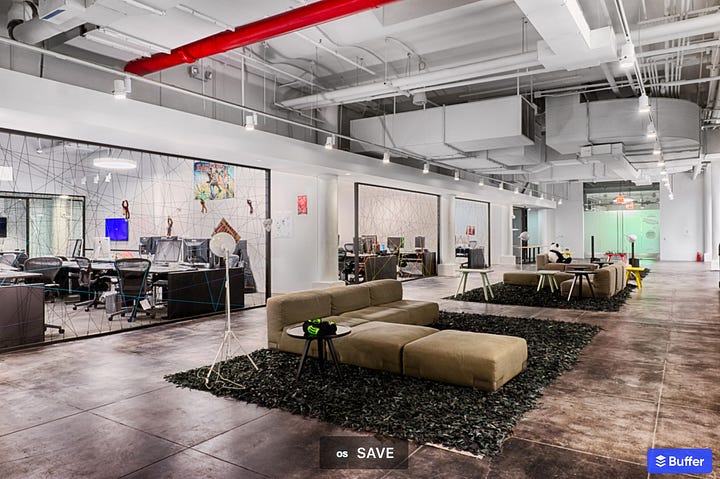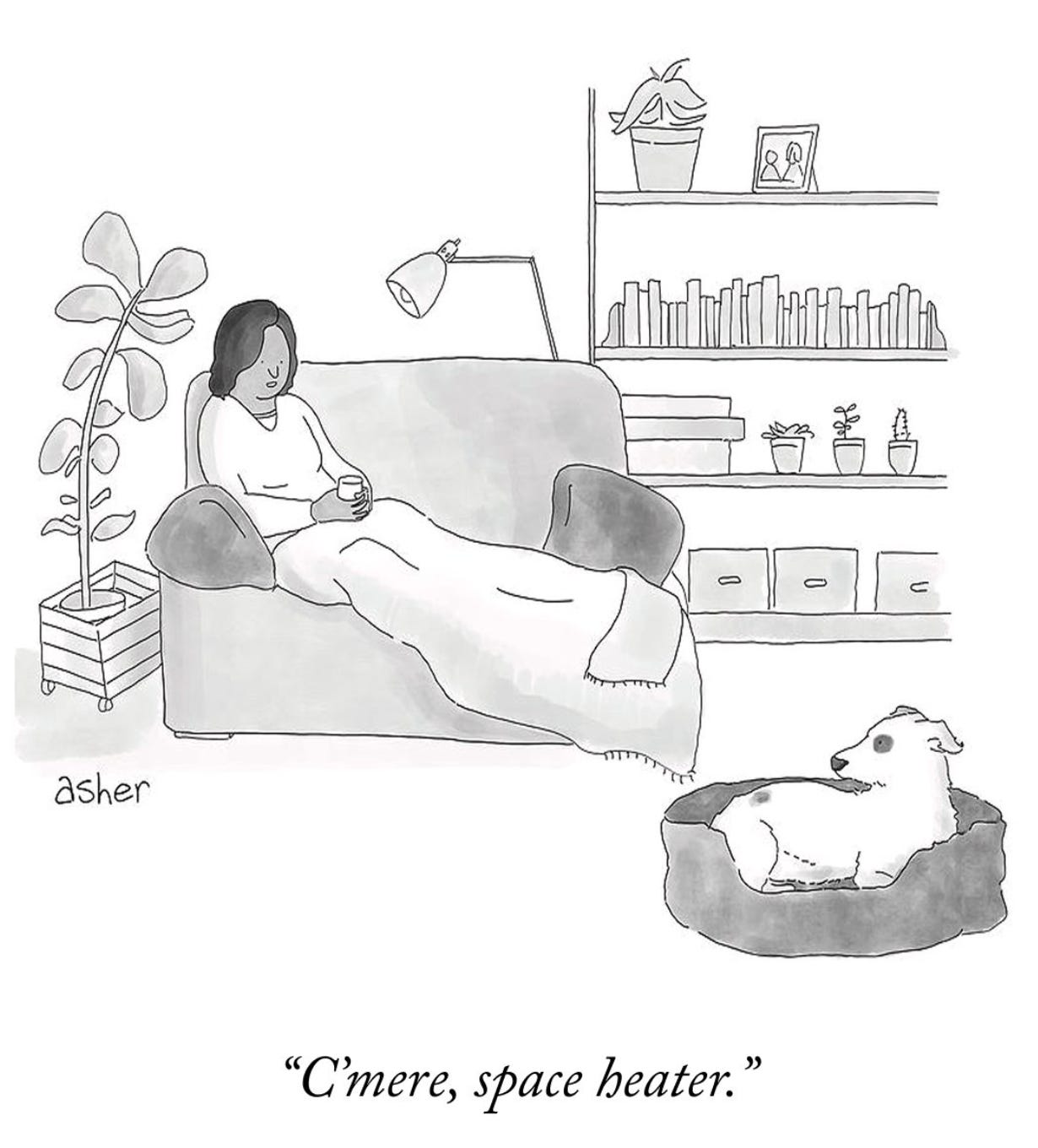POSITIVE AFFIRMATION
“Driving into the office 5x a week at 40 min on average each way equates to almost 7 hours in the car per week.
And that’s almost enough time to get through an audiobook.
Looks like my book consumption this year is about to go WAY up.”
- Johnny T. Nguyen
Before the pandemic, office space layout design was a hot topic. The perfect office layout would maximize interactions among employees, leading to dramatic innovation. Companies like Pixar’s The Steve Jobs Building, Spotify’s Open NYC Offices, and Google’s London campus embody these collaborative workspace designs, investing millions of dollars into new buildings to incorporate maximizing these random encounters.




Then came the pandemic, and WFH suddenly became a reality for millions. They realized how awesome it was—no commutes, no dressing up, flexible hours, but still crushing the job. They also had to find ways to cope with the increasing loneliness, coming up with wacky ideas like body doubling.
But the pendulum has swung back and there’s a return-to-office mandate. Neutral productivity would endorse a more balanced approach, versus a one-size-fits-all approach. But since I don’t run the world, how can we get the best of both paradigms?
For innovation to spark, I think it requires two key ingredients:
Different people who are knowledgeable about different topics
Those people are comfortable sharing and exploring the edges
Which means innovation can only occur if:
You talk to new people (gasp!)
And you talk about something that might be uncomfortable (double gasp!)
As I’ve resumed coming into the office 5x a week, here are my immediate thoughts on the positives and drawbacks. With a particular eye on innovation and sticking with the tenets of neutral productivity, see if any of these resonate with you:
Positives
Lunches, lunches, and more lunches. Lunch with friends, lunch with colleagues, lunch with new colleagues. Highly recommend Never Eat Alone by Keith Ferrazzi, which will give you the right perspective to overcome the dreaded networking.
More movement throughout the day. Always take the stairs.
Amenities like an office gym and an onsite barber.
Exploiting coworker’s knowledge… on personal topics like raising kids, financial and retirement planning.
Drawbacks
Pooping in shared restrooms. Always awkward.
Need to buy more work pants and iron shirts.
More interruptions at work. Disruptive, but these should be embraced if it’s the right person. Refer to innovation criteria #2 above.
Two Ideas that Balance Productivity
Getting the best from WFH while at the office. The idea here is what elements from your WFH setup can you incorporate into your office? Think how to mimic the comfort and flexibility of home while elevating the collaborative aspects. For example, bring in those potted plants and other decorations, which may lead to conversation starters. Perhaps a warm rug and some snacks to keep a fellow collaborator in your space awhile longer. Don’t forget the snake plant.
Time-Blocking. It’s a tried and true method. Block off your calendar weekly for deep work time. Block off your calendar a month ahead of time to take time off to enjoy the day, and break up the 9-to-5 daily grind because humans aren’t meant to work like that (ref Slow Productivity by Cal Newport). I time-blocked my end of the day so I can leave at a reasonable time to pick up my daughter from daycare.
TAKEAWAY
A/B test your workday. Whether you’re a long-time office worker or someone recently mandated back to the office, experiment with your productivity rhythm. In marketing, they often experiment with two options, A or B, try them out with a sample population for reactions, and based on those results select which one will work better for the wide audience.
What can you experiment with that may lead to unknown, surprising results? Maybe it’ll lead to innovation.
HAVE YOU HEARD
➩ Harvard Business Review’s 9 Trends That Will Shape Work in 2025 and Beyond
➩ Leaked Audio: Here’s What JPMorgan CEO Dimon Said About Hiring and Remote Work
➩ And his follow-up where he doubles down, JPMorgan CEO Jamie Dimon accuses ‘people in the middle’ of being the only ones against his RTO policy




